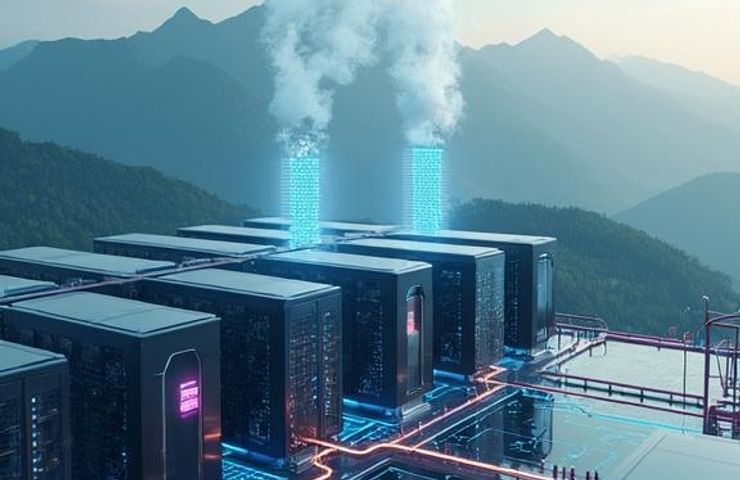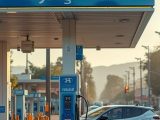
Fuel Cell Technology to Power Korea’s Largest AI Data Center in 100-Megawatt Deal
July 10, 2025FuelCell Energy and South Korea’s data infrastructure up-and-comer Inuverse have teamed up with a strategic (but non-binding) Memorandum of Understanding (MOU) to explore deploying up to 100 megawatts of advanced fuel cell power at Korea’s future AI Daegu Data Center (AI DDC). Starting in phases from 2027, this project aims to raise the bar for green digital infrastructure—not just in Asia, but on a global scale.
Powering AI With Performance and Resilience
Modern data centers are absolute workhorses—especially when they’re built for AI and heavy-duty cloud computing. But it’s not just about electricity. These hubs demand serious attention to cooling, uptime, and going green.
That’s where FuelCell Energy’s solid oxide fuel cell technology steps in. These systems deliver super-reliable, distributed power—right where it’s needed—without leaning on dirtiest grid mixes or backup diesel. Even better, the heat that’s typically wasted? It gets repurposed via absorption chillers to cool high-performance servers, cutting emissions and utility bills down to size.
As AI workloads start pushing infrastructure to its limits, Inuverse is looking to future-proof Korea’s biggest hyperscale facility with these ultra-efficient fuel cells. And with KEPCO, the national grid operator, in the loop, the project is aligned with South Korea’s push toward a cleaner, more resilient energy future.
Daegu: A Green Tech Hotspot in the Making
The AI DDC is taking shape in Daegu, South Korea’s fourth-largest city, home to over 2.4 million people. Known for its stronghold in manufacturing and IT, Daegu is now pivoting into the digital era with an energy strategy to match. The data center is part of a broader push for a carbon-neutral, data-driven economy across the country.
For Inuverse, aligning with national ESG goals isn’t just a checkbox—it’s a business model. The fuel cells powering this facility could initially run on natural gas, with a clear roadmap to switch to hydrogen as availability rises, helping meet net-zero targets.
Why This Deal Matters
- Massive Scale: With up to 100 MW envisioned, this would be one of the world’s biggest fuel cell deployments in a data center setting.
- Field-Proven Tech: FuelCell Energy already has a 58 MW system live at a single site in Korea, so this isn’t their first rodeo.
- ESG-Ready: Distributed generation and ultra-low emissions help check all the ESG boxes that today’s digital infrastructure demands.
- Growth Magnet: Infrastructure like this doesn’t just run data—it attracts new investments, talent, and innovation to Daegu’s tech ecosystem.
Now, while this MOU isn’t a signed deal with all the I’s dotted and T’s crossed—things like power purchase agreements and regulatory approvals are still on the horizon—it’s a high-profile move. FuelCell Energy positions itself firmly in the hyperscale game, and Inuverse sets a bold example for building AI data centers on clean foundations.
The Tech Behind the Talk
Here’s what makes fuel cell technology special: instead of burning fuel, it uses electrochemical reactions to create electricity. That means low to no NOx, SOx, or particulate emissions—air quality win. Plus, these systems are modular, so they can be installed right at the facility. And let’s not forget the thermal output, which gets captured and rerouted into data center cooling systems via those absorption chillers. The result? Cleaner power, more efficient cooling, and way less pressure on the grid.
That’s a big deal in places like Asia’s crowded metro areas, where expanding power grids isn’t exactly quick or cheap. Here, distributed generation like this isn’t just nice—it’s necessary.
What’s Next?
The MOU lays the groundwork, but the real action kicks off after 2027—assuming everything from investments to partnerships comes together. The initial rollout could set a powerful example for other clean energy infrastructure projects across Asia and beyond.
With concerns around electricity costs, energy security, and sustainability growing louder, smart, modular, and green power solutions like fuel cells might just become the backbone of tomorrow’s AI data centers.
Bottom line: this collaboration isn’t just about ticking tech boxes. It’s about proving that cutting-edge digital performance and sustainability can go hand in hand—if you build it right from the ground up.



 With over 15 years of reporting hydrogen news, we are your premier source for the latest updates and insights in hydrogen and renewable energy.
With over 15 years of reporting hydrogen news, we are your premier source for the latest updates and insights in hydrogen and renewable energy.